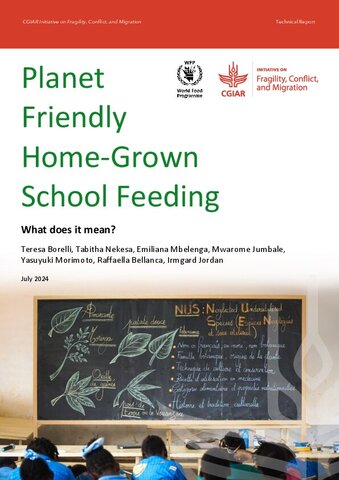
School meals present a unique opportunity to tackle the various food system challenges, including the depletion and pollution of natural resources, habitat and biodiversity loss, deforestation, ocean acidification, and climate change, while delivering multiple social and economic benefits towards sustainable food systems for healthy diets. Despite these advantages, the approach is challenged by the lack of evaluation tools and metrics that can be used to quantify the level of “planet friendliness” in the different regions the Home Grown School Feeding approach is applied.
Through evaluation of the current school meal supply chain in Sub-Saharan Africa, this study identifies practices in food production, transport, processing, and storage which may influence the impact of school feeding programs on planetary health. The study initially focuses on three main products supplied to schools by the World Food Program (WFP) – maize, beans and dark green leafy vegetables – and proposes to focus on general agronomic, food processing and handling practices.
The assessment undertaken has resulted in an evaluation tool for all of WFP’s farmer-directed procurement processes linked to school feeding. The proposed tool, currently in draft form and yet to be tested, provides information about indicators to be included in food procurement policies and processes for the provision of greener school meals in low- and middle-income countries (LMICs). The tool is intended to simplify the evaluation of current procurement processes and guide future decision making around school procurement to ensure planetary health considerations are widely adopted to bolster systemic resilience. The tool can serve multiple purposes: as a checklist, a scoring template for refining tenders, a monitoring and evaluation tool, or a foundation for co-creating policies for any school feeding program at the school, local, or national level.
Borelli, T.; Nekesa, T.; Mbelenga, E.; Jumbale, M.; Morimoto, Y.; Bellanca, R.; Jordan, I.
Also published on the CGIAR Website: https://alliancebioversityciat.org/publications-data/planet-friendly-home-grown-school-feeding-what-does-it-mean
And the Annexes here: https://alliancebioversityciat.org/publications-data/planet-friendly-home-grown-school-feeding-annexes
